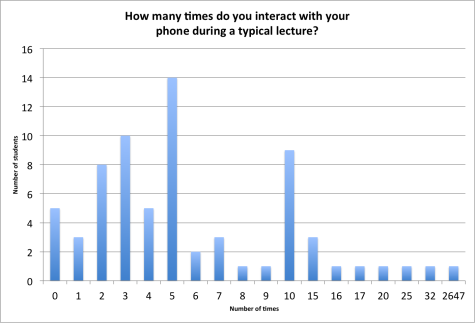Nearly three years after the beginning of the COVID-19 pandemic, the habits formed during isolation continue to influence lives today. From COVID testing the second a sniffle comes, to living life through a screen, the effects of the pandemic continue to impact the daily lives of students and teachers alike.

The significant increase in cell phone use in the classroom forces teachers to create strict policies around having and using phones during the school day. Mrs. Julie Gross, Algebra II teacher, allows no phones or earbuds visible during class in order to limit distractions in the classroom.
“I see it as a connection issue. We all want to know what is going on and we want to make sure we don’t miss a call or text, [and] I totally get it, but at some point, enough is enough,” Ms. Gross said. “With the SAT and ACT not being used in certain colleges for admissions, it is your GPA and rigor of classes that [colleges] will look at to see if the student is a good fit for that school. If your grade is going down because you can’t focus, you might not get into your number one school, and our students are not thinking about this.”
According to a 2021 study published by the Italian Journal of Pediatrics, phone usage in teens nearly quadrupled since the pandemic, with 66.3% of students in the study reporting more than four hours of use per day.
“More students are becoming distracted. I have to tell students throughout the day to put them away and take out their earbuds,” Ms. Gross said. “This takes away from my teaching and is distracting to the whole class. We have to stop using the pandemic as an excuse and move on. This is a new school year. We have to get rid of distractions and do the best that we can do.”
Students notice an increase in their phone usage since the pandemic and the distractions it creates. Sophomore Kaitly Keel limits the time she spends on her phone in order to complete tasks with fewer distractions.
“I find it more difficult to focus because of my phone, especially when I go to check one text then I end up scrolling for half an hour,” Keel said. “My phone [can be] pretty distracting most times, but when I put my music on and focus, I am able to be very productive.”
In many of her classes, Keel gives her phone up before class starts whether it be in a ‘phone jail,’ or at the front of the room. Though some schools have been successful in removing cell phones from schools, teachers at Legacy opt for looser restrictions rather than eliminating phones altogether.
“Collecting phones doesn’t [always] work because some people don’t [put their phone on] silent so when they go off, it distracts the whole class, and people just go up to the front to check them, so it creates even more disturbances,” Keel said. “Also, [getting their phone back] is all people think about, so it creates obstacles to getting our work done in a timely manner.”
Outside of school, Keel uses her phone to connect with friends and family, as well as keep up with what other people are doing on social media and communicate with teachers when needed.
“My phone use increased after the pandemic because I had a time limit in sixth and seventh grade,” Keel said. “I think phones are beneficial to students as a whole, in and out of school, because they allow you to get messages from your teachers and they provide a gateway for communication with family and friends.”
Though collecting students’ phones isn’t ideal, studies show limited screen time helps students focus and build a longer attention span, which is decreased by extended time on phones and social media.
“Our current technology is here to stay, and I love it. I like to get ahold of my family any time I want just like students, but it is such a distractor. I believe that students would do better if they did not have them throughout the day,” Ms. Gross said. “Some students abide by my rules, and some do not. Those that do not have their phones out do much better in my class. I believe there is a correlation [between] grades and distractions.”




